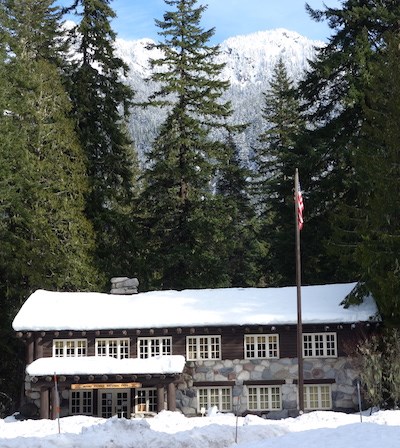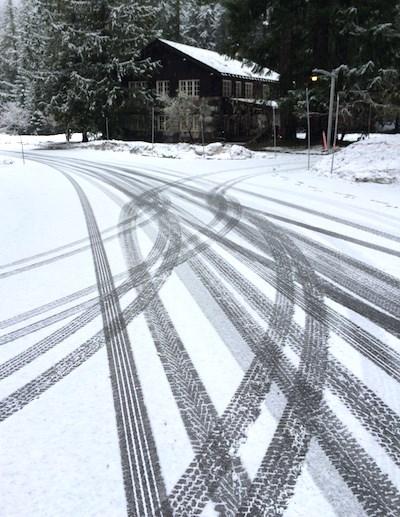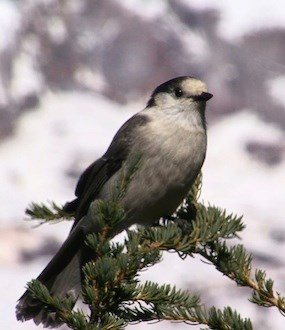
NPS Photo
The mountain's landscape undergoes a dramatic transformation in winter. Its colorful subalpine meadows and lush old growth forests are draped with a thick blanket of snow for much of the year. The sometimes dusty appearing glaciers are freshly covered in white and the snow-covered roofs of the rustic historic buildings are rimmed with icicles, creating a picture perfect setting. 
NPS Photo Winter RecreationEver wonder how Mount Rainier's plants and animals spend the challenging winter months and cope with heavy snows and chilling winds? How do they survive the long winter to reproduce, gather food and store energy in the mountain's short snow-free season? Learn about Mount Rainier's winter ecology by taking a snowshoe walk with a ranger and viewing the Jackson Visitor Center film. In Longmire, warm up in the National Park Inn while enjoying the snowy view from the deck, have lunch, or browse for gifts in the general store. Other winter activities in the park include snowshoeing, crosscountry skiing, winter camping, and snowboarding. Discover more options for winter recreation and things to do in winter. Winter TravelMost of Mount Rainier's roads are closed for winter. The road from Nisqually Entrance to Longmire is open year-round, but may close during extreme weather. During the winter, the gate at Longmire closes nightly so that the Paradise Road can be assessed for public safety each day. Icy or snowy roads, poor visibility due to weather, and the chance of wildlife along roads can make winter travel challenging. Vehicles are required to carry tire chains from November 1-May 1. Learn more about how to travel in Mount Rainier National Park during winter. 
NPS Photo Prepare & Take CareMount Rainier offers excellent opportunities for exploration and adventure, but sometimes people get lost, injured, or worse. Reduce your risk by following these simple guidelines: Dress Warmly & Stay Dry Pay Attention to the Weather Prepare Take Care 
NPS Photo Winter WildlifeThe snows of winter concentrate wildlife where life is easier- where shallow snow provides easier travel and access to food. Parking areas and roadways are efficient travel corridors for deer and foxes, and deer may find the most available forage along roadways. Many visitors feed wildlife to get a better photograph and some mistakenly think that it helps the animals through the winter months. But this brings wildlife closer to vehicles and people, often with dire consequences. Animals attracted to these busy areas are often injured or killed by vehicles. The feeding of wildlife, an especially significant problem at Paradise, poses a threat to wildlife by increasing the risk of disease transmission (among themselves and to you), unnaturally increasing populations which may prey on other species (jays feed on eggs and nestlings of other songbirds), and causing digestive problems (their systems are adapted for natural foods, not cheese crackers). Please keep your food away from wildlife. Pick up food particles and don't leave your lunch on your bumper- a fox or jay will find it. And lastly, please don't feed the wildlife- it's bad for them, and it's bad for you- feeding wildlife is illegal and you may be fined. Learn more about how to Keep Wildlife Wild. Additional information is posted on the wildlife safety page. |
Last updated: November 21, 2025
